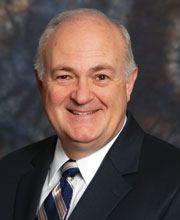 A High-Tech Future for a High-Powered Capital
A High-Tech Future for a High-Powered Capital
In most countries, the capital city is a center of commerce as well as the seat of government. Until recently, that was not true in the United States. Washington was viewed narrowly as a center of politics and power. That image is now changing, as more corporations move their headquarters here. But the change will have to accelerate if the District and the Washington region are to thrive in an era of government cutbacks.
Lean years are ahead for the federal government. Last summer's debt-ceiling agreement alone will mean belt tightening by the billions, amounting to between $1 trillion and $2 trillion in cuts over the next 10 years. The pinch will be felt broadly but will be particularly acute here, where the federal government, our largest employer, factors so prominently into day-to-day business.
There is a critical need, then, for the metropolitan area to reduce its dependence on federal spending, and that means diversifying our economy. The quickest way to do so is to invest in science and technology, and indeed to build the D.C. area into a high-tech center of discovery and innovation.
The good news is that many of the necessary elements are already in place. The region boasts a highly educated workforce—in fact, the highest among large U.S. metropolitan areas, with more than 45 percent of its people holding at least a bachelor's degree. The Washington region is flush with universities, and it is universities that stimulate the growth of technology hubs, from Silicon Valley to its new hopeful rival in New York City. The 14 members of the Consortium of Universities of the Washington Metropolitan Area infuse the area with more than 150,000 students. They employ a legion of faculty members offering licensable ideas and technical expertise on everything under—and including—the sun.
At GW there is renewed commitment to science and engineering, embodied in the half-million-square-foot Science and Engineering Hall under construction in Foggy Bottom and in the ongoing build-out of our 120-acre science and technology campus in Ashburn, Va. That is not to say that we are abandoning our work in policy, law, and business. On the contrary—we recognize that credibility in the worlds of policy and commerce increasingly depends on credibility in science and technology.
In short, the intellectual capital is here and is growing. But what about the technology companies themselves? Efforts to incubate and retain local start-ups and attract businesses are starting to bear fruit. Successes include the D.C.-based deal site LivingSocial, and more are sure to follow thanks to initiatives like the $450 million Revolution Growth Fund launched last year by investors Ted Leonsis, Steve Case, and Donn Davis.
Earlier this year, D.C. announced a partnership with Microsoft, and the city hopes to include the firm in plans for a new technology hub east of the Anacostia River.
And Mayor Vincent C. Gray, BS '64, emphasized the importance of technology firms in his State of the District address. Universities stand ready to support the District's efforts.
Now is the time for our universities and local and regional governments to work together on finding ways to make this capital region the nation's newest technology hub.
Steven Knapp
President
The George Washington University
A version of this text was published as an op-ed in the Washington Post's weekly publication Capital Business in February.
